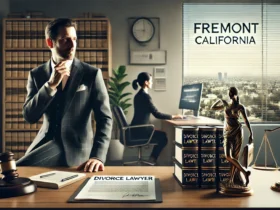Introduction To Blind Law
Blind law refers to the principle that justice should be impartial and fair. It means that judges and legal systems must make decisions without bias or favoritism. This concept is very important in legal contexts. It helps ensure that everyone is treated equally under the law, regardless of their background or status.
In many places, blind law operates by using specific rules and procedures. Courts are designed to be fair, with judges who follow established laws. This helps protect the rights of all individuals. In some jurisdictions, there are additional measures to promote blind law. For example, random assignment of cases can prevent conflicts of interest.
Training for judges and legal professionals also emphasizes the need for impartiality. By focusing on fairness, blind law helps build trust in the legal system. People are more likely to accept decisions when they believe the process is just. Overall, understanding blind law is essential for a fair society. It is the foundation for legal systems around the world, ensuring that justice is available to all.
Historical Background
The concept of blind law has its origins in ancient legal systems. Early societies recognized the need for fair treatment in disputes. The idea gained prominence in Western legal traditions with the development of the rule of law. This meant that laws apply equally to everyone, regardless of wealth or power.
Throughout history, blind law evolved in response to social changes. In the Middle Ages, courts began to adopt more structured procedures. This shift aimed to reduce bias and ensure fairness in legal outcomes. The Enlightenment period further emphasized individual rights, shaping modern legal principles.
Key milestones in the development of blind law include landmark cases and legal reforms. For instance, the establishment of common law in England helped standardize legal practices. In the United States, the Constitution and Bill of Rights reinforced the idea of equality before the law. These documents laid the groundwork for blind law principles in American jurisprudence.
Overall, the historical journey of blind law shows its importance in creating just legal systems. Its evolution reflects society’s ongoing struggle for fairness and equality in the pursuit of justice.
Types Of Blind Law
Blind law encompasses several important concepts, including blind justice, blind trusts, and blind searches.
Blind justice refers to the idea of impartiality within the judicial system. This means that judges and juries should make decisions based solely on facts and evidence, without personal biases. The image of Lady Justice, often depicted wearing a blindfold, symbolizes this principle. It highlights the importance of fairness and equality in legal proceedings, ensuring that all individuals receive the same treatment under the law.
Blind trusts serve a different purpose. They are legal arrangements used in estate management. In a blind trust, the owner transfers assets to a trustee who manages them without the owner’s input. This setup helps avoid conflicts of interest, especially for public officials or business leaders. By keeping financial interests hidden, blind trusts promote transparency and reduce the risk of corruption.
Blind searches involve law enforcement practices that protect privacy rights. In some cases, police may conduct searches without prior notification or knowledge of the parties involved. This method aims to gather evidence without influencing outcomes. However, it raises questions about individual rights and the balance between security and privacy. Each type of blind law plays a crucial role in promoting fairness and justice in different contexts.
Blind Law In Practice
Blind law principles are demonstrated through various case studies and court rulings. One notable example is the landmark case of Brown v. Board of Education. This case challenged racial segregation in schools. The Supreme Court ruled that separate educational facilities are inherently unequal. This decision reinforced the idea of blind justice, emphasizing that all individuals deserve equal treatment under the law.
Another example is the use of blind trusts by public officials to avoid conflicts of interest. When officials place their assets in a blind trust, they prevent personal financial interests from influencing their decisions. This practice promotes transparency and builds public trust in the political system.
In criminal law, blind searches have raised debates on privacy rights. Courts have examined cases where evidence was obtained without prior notice to individuals. Rulings in these cases often aim to balance law enforcement needs with individual rights. The outcomes can set precedents that influence how police conduct searches in the future.
Overall, the application of blind law in these examples shows its impact on legal outcomes and fairness. By promoting impartiality, transparency, and respect for rights, blind law contributes to a more equitable justice system.
The Role Of Blind Law In Modern Legal Systems
Blind law plays a vital role in contemporary legal frameworks. It ensures that legal processes are conducted fairly and impartially. In many countries, laws are designed to uphold the principles of blind justice. This includes measures that prevent bias in court proceedings and promote equal treatment for all individuals.
The application of blind law helps foster trust in the legal system. When people believe that the law treats everyone equally, they are more likely to accept legal decisions. This trust is crucial for maintaining social order and encouraging civic participation. Additionally, blind law principles guide the conduct of public officials, ensuring that they act in the public interest without personal gain.
However, implementing blind law principles faces several challenges. One significant issue is the presence of implicit biases among judges and juries. Despite intentions to remain impartial, human emotions and experiences can influence decisions. Additionally, the complexity of legal systems and varying interpretations of laws can create inconsistencies.
Another challenge is the balance between security and privacy in practices like blind searches. While these searches aim to gather evidence fairly, they can raise concerns about individual rights. Addressing these challenges is essential for enhancing the effectiveness of blind law in modern legal systems.
Criticisms And Challenges
While blind law aims to promote fairness and justice, it faces several critiques and challenges. One major criticism is that the concept of blind justice can be too simplistic. Critics argue that true impartiality is difficult to achieve in practice. Human biases—conscious or unconscious—can influence decisions, undermining the very goal of fairness.
Potential biases within the judicial system can have serious implications. For example, racial and socioeconomic factors may affect how individuals are treated in court. Studies have shown that marginalized groups often face harsher penalties or less favorable outcomes. This reality raises questions about whether blind law is effective in achieving true equality.
In light of these challenges, discussions around reform and modernization of blind law are increasingly important. Advocates suggest training programs for judges and juries to recognize and mitigate biases. They also recommend updating legal practices to better reflect contemporary values around justice and fairness.
Moreover, incorporating technology, such as data analytics, can help identify patterns of bias in legal outcomes. Overall, addressing the criticisms and challenges of blind law is essential for its evolution and effectiveness in ensuring justice for all.
The Future Of Blind Law
The future of blind law is poised for significant evolution as society continues to address issues of fairness and justice. Predictions suggest that legal systems will increasingly emphasize transparency and accountability. This shift aims to rebuild trust in institutions and ensure that justice is not just a theoretical ideal but a practical reality for everyone.
Technological advancements will play a crucial role in enforcing blind law principles. Tools like artificial intelligence and data analytics can help identify biases in legal decisions and streamline processes. For example, algorithms can analyze case outcomes to highlight disparities in treatment among different demographic groups. This information can guide reforms and promote fairer practices within the judicial system.
Public opinion and activism will also shape the future of blind law. As communities advocate for equality and justice, they put pressure on lawmakers and legal institutions to adapt. Movements focused on social justice often call for reforms that enhance blind law principles, such as eliminating racial bias in sentencing and ensuring transparency in law enforcement practices.
Overall, the future of blind law will likely be characterized by a more informed and engaged public, advanced technology, and a commitment to reform. These factors will work together to create a legal system that genuinely reflects the ideals of fairness and equality.
Conclusion
In summary, blind law encompasses important principles like blind justice, blind trusts, and blind searches. These concepts aim to ensure fairness and impartiality in legal systems. Historically rooted in the fight for equality, blind law has evolved to address contemporary challenges, such as biases and privacy rights.
The application of blind law promotes trust in the legal system, but it also faces criticisms and obstacles. Implicit biases and inconsistencies in legal interpretations can undermine its effectiveness. However, discussions around reform and modernization are vital for improving these principles.
Looking ahead, technological advancements and public activism will play significant roles in shaping the future of blind law. By addressing biases and promoting transparency, society can move closer to achieving true justice. Ultimately, blind law remains a cornerstone of equitable legal systems, reflecting our ongoing commitment to fairness for all individuals.
To read more, visit our blog page. We do have more topics!










Got a Questions?
Find us on Socials or Contact us and we’ll get back to you as soon as possible.